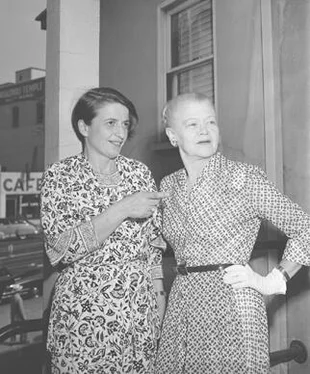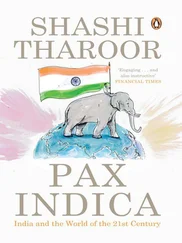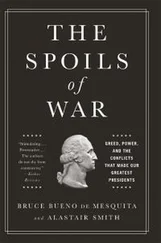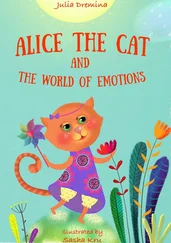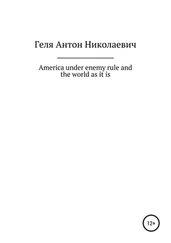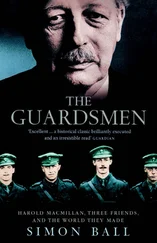Anne Heller - Ayn Rand and the World She Made
Здесь есть возможность читать онлайн «Anne Heller - Ayn Rand and the World She Made» весь текст электронной книги совершенно бесплатно (целиком полную версию без сокращений). В некоторых случаях можно слушать аудио, скачать через торрент в формате fb2 и присутствует краткое содержание. Жанр: Биографии и Мемуары, на английском языке. Описание произведения, (предисловие) а так же отзывы посетителей доступны на портале библиотеки ЛибКат.
- Название:Ayn Rand and the World She Made
- Автор:
- Жанр:
- Год:неизвестен
- ISBN:нет данных
- Рейтинг книги:5 / 5. Голосов: 1
-
Избранное:Добавить в избранное
- Отзывы:
-
Ваша оценка:
- 100
- 1
- 2
- 3
- 4
- 5
Ayn Rand and the World She Made: краткое содержание, описание и аннотация
Предлагаем к чтению аннотацию, описание, краткое содержание или предисловие (зависит от того, что написал сам автор книги «Ayn Rand and the World She Made»). Если вы не нашли необходимую информацию о книге — напишите в комментариях, мы постараемся отыскать её.
Ayn Rand and the World She Made — читать онлайн бесплатно полную книгу (весь текст) целиком
Ниже представлен текст книги, разбитый по страницам. Система сохранения места последней прочитанной страницы, позволяет с удобством читать онлайн бесплатно книгу «Ayn Rand and the World She Made», без необходимости каждый раз заново искать на чём Вы остановились. Поставьте закладку, и сможете в любой момент перейти на страницу, на которой закончили чтение.
Интервал:
Закладка:
From the moment she began to regard herself as a future writer, Rand’s life had a purpose. Writing became an idée fixe that would see her through the next tumultuous years in Russia and feed a growing and finally passionate determination to escape and emigrate to America—like Britain, a free society that historically tolerated Jews.
The Rosenbaums sailed on a packed ship through the North Sea, but their fate would have been kinder had no ship been found to take them home. After 1914, the war created unimagined hardships for all Russians, but especially Russian Jews, and its toll in lives and penury led directly to the revolution. Among her family members on both sides, with a very few exceptions, only Rand would ever again leave Russia. By the time she did, she and those closest to her would be battered and starving. “The war marked the end of the world,” she told a friend much later.
By early August the family was safely home. But their home was in an altered city renamed Petrograd. The czar, mistakenly believing that St. Petersburg was a Germanic name, had ordered the official change to an eastward-looking Slavic variation, ending two centuries of proud, and productive, openness to the developing West.
That fall, as the imperial regime was hastily mobilizing its huge but badly prepared army to go to war against the modern, well-trained Germans, Rand entered school. Natasha and Nora stayed at home with the governess, while Rand began a classical course of study at a famous private girls’ gymnasium, or primary school, called Stoiunin. The choice of Stoiunin has all the earmarks of Rand’s mother’s preferences. It was fashionable with the city’s elite families, and its curriculum promised to encourage both intellectual and athletic development in girls. Off and on, for the next three and a half years, Rand profited from it and hated it.
The school was progressive and well run. Founded in 1889 by Madame M. N. Stoiunina, a renowned educational thinker and a friend of Fyodor Dostoyevsky’s wife, and by her husband, V. J. Stoiunin, a noted teacher of Russian and a member of the scholars committee of the Ministry of Public Education, it was conceived as an exemplary school for the Stoiunins’ daughters and the daughters of their literary friends. Its purpose was to balance academic, artistic, and hygienic development. The tuition was steep, but money wasn’t enough to secure entry. Applicants had to pass rigorous entrance exams, and so the small student body was alert, well connected, and affluent—typically, better connected and more affluent than Rand’s family. The school had an extraordinary faculty, including, during Rand’s years there, the well-known literary critic V. V. Gippius, who had earlier been the headmaster of the Tenishev boys’ school, where Vladimir Nabokov was a student, and the famous philosophy professor N. O. Lossky, with whom Rand would later take a memorable class at the University of Petrograd. They tended to be prominent liberals who favored a democratic middle way between the czar and the burgeoning revolutionaries. The school was liberal, too, in its admission policies: Thanks to the Stoiunins’ government contacts, it sidestepped official quotas on Jewish students. Almost a third of Rand’s second-year class of thirty-nine girls was Jewish at a time when most Russian secondary schools were legally constrained to limit Jews to no more than 2 to 5 percent of students. By a decree of the academy’s governing council, each year two or three bright girls from very poor families were admitted and allowed to study at the expense of the trustees, though Rand wasn’t among them.
Stoiunin was renowned for an equally high level of teaching in the humanitarian disciplines and in the natural and mathematical sciences, which Rand was good at and liked. She remained a student there from 1914 until 1918, and she received a general education such as few American middle school students today can dream of. She studied French and German, mathematics, natural and physical science, European history, Russian language and literature, drawing and painting, and possibly music, medical hygiene, jurisprudence, gymnastics, and needlework. Russian Orthodox religion classes were mandatory and conducted by a priest; Jewish girls had to attend but didn’t have to participate. Although sitting through lessons in this “revoltingly dark,” “secret, superstitious, and unhealthy” doctrine must have been torture for her—especially in light of the horrific anti-Semitic violence that was then occurring throughout Russia, avidly supported by the church—in middle age she could still amaze her friends by correcting a mistaken recitation of a well-known Russian Orthodox prayer.
In 1958, while discussing the eponymous hero of Sinclair Lewis’s Arrowsmith , she wrote, “Any man [who has] a serious central ambition is more of an outsider in his youth than in later years. It is particularly in his youth that he will be misunderstood and resented by others.” A poignant remark, considering how much of an outsider Rand would remain.
By the time she entered Stoiunin, she was proudly and painfully conscious of her difference. She recalled having “a tremendous sense of intellectual power,” a conviction that she “could handle any [idea or task] I wanted to.” In one early experience at school, she remembered taking a field trip to the city’s zoological museum, a dusty repository of stuffed animals, snakes, and birds. The teacher asked the class of girls to choose a bird or an animal about which to write a story. Rand chose a stork perched on a sliver of rooftop with a hint of a chimney poking through and wrote her story about a girl who lived in a house that just happened to have a stork on top, “merely mentioning the stork.” The teacher was tickled, Rand recalled, and gave her a high grade. Later, the teacher confided to Rand that she had created the assignment because she thought the girls were too young to write convincingly about people. But as evidenced by her postcard collection, Rand’s eye was always focused on her fellow man.
In another school assignment, the girls were asked to write a few paragraphs about why being a child is such a joyous thing. Rand didn’t agree that it was joyous and shocked her classmates with “a scathing denunciation” of childhood, she recalled. At the top of the page, she copied quotations out of an encyclopedia from Descartes (“I think, therefore I am”) and Pascal (“I would prefer an intelligent hell to a stupid paradise”) to make her point, which was that children couldn’t think as clearly as they would be able to once they had grown up and learned more. And what use was it, she asked, to play boring games and read silly books while waiting? This memory formed the basis for a revealing flashback in her third novel, The Fountainhead (1943); there, a brilliant and exuberant little boy named Johnny Stokes humiliates the book’s archvillain, Ellsworth Toohey, by composing a masterly, rebellious grade-school essay on hating school, while Ellsworth sucks up to the teacher by pretending to love school. Toohey ends up envying and hating Stokes, as perhaps Rand felt that her fellow students envied her.
Rand was known as “the brain” of her class. But she had no friends. There was one girl, however, who struck her as interesting and whom she liked to observe. Self-confident, independent, and intelligent, the girl was a very good student and was also universally popular with the other girls. How did she do it? She didn’t seem to be making an effort to win people over. Rand imagined that she and the girl might become friends and was also curious to know what made the girl different from herself. Were social graces perhaps not a sign of shallowness or mediocrity? One day, she marched up to the girl and asked, awkwardly and bluntly, “Would you tell me what is the most important thing in life to you?” The girl, startled but willing, answered, “My mother.” Rand nodded and walked away. In her view, this was a ridiculous thing to say, and it disqualified the girl from further interest.
Читать дальшеИнтервал:
Закладка:
Похожие книги на «Ayn Rand and the World She Made»
Представляем Вашему вниманию похожие книги на «Ayn Rand and the World She Made» списком для выбора. Мы отобрали схожую по названию и смыслу литературу в надежде предоставить читателям больше вариантов отыскать новые, интересные, ещё непрочитанные произведения.
Обсуждение, отзывы о книге «Ayn Rand and the World She Made» и просто собственные мнения читателей. Оставьте ваши комментарии, напишите, что Вы думаете о произведении, его смысле или главных героях. Укажите что конкретно понравилось, а что нет, и почему Вы так считаете.
